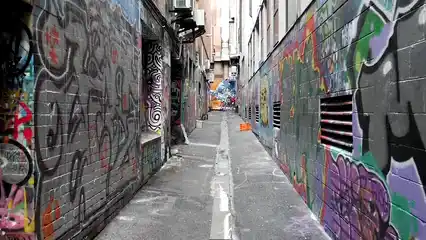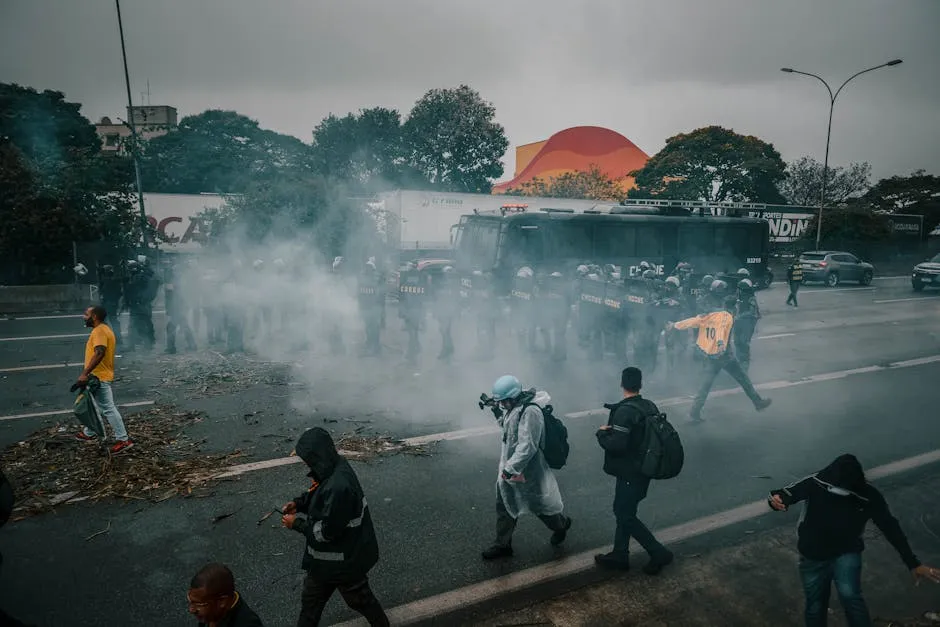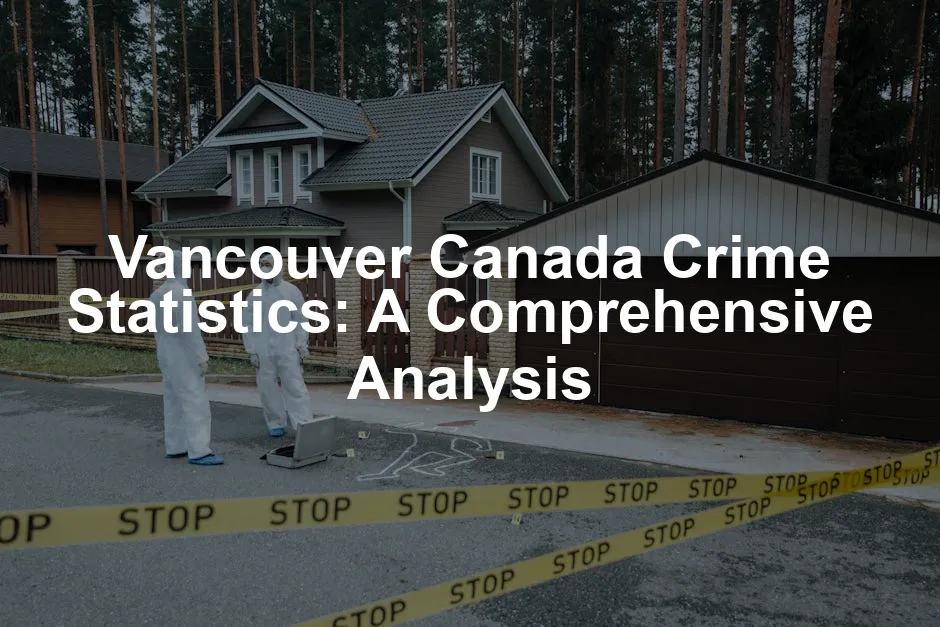Introduction
Vancouver, Canada, is a city known for its stunning views and vibrant culture. Yet, like any urban area, it has its share of crime. Understanding crime statistics in Vancouver is essential for residents, potential movers, and policymakers. Why? Because knowing the crime landscape helps people make informed decisions about their safety and community engagement.
For residents, crime statistics can shed light on the safety of their neighborhoods. Are you living in a low-crime area, or is your block the next set for a crime drama? Potential movers can use these stats to choose a safe environment for their families. Policymakers, on the other hand, require this data to allocate resources effectively and implement crime prevention strategies.
This article aims to provide an in-depth analysis of crime statistics in Vancouver. We’ll explore recent trends, compare local crime rates with national averages, and share insights from local authorities. You can expect a blend of humor and curiosity as we navigate the serious topic of crime.
So, buckle up and stay informed! Your neighborhood’s crime trends matter for your personal safety and community well-being. Knowledge is power, and staying aware can help you avoid being part of a local crime statistic.

Understanding Crime Statistics
What Are Crime Statistics?
Crime statistics are data collected to measure the prevalence and types of crimes in a given area. Law enforcement agencies, like the Vancouver Police Department (VPD), compile these statistics from reports and investigations. These stats can include everything from theft and assault to more severe crimes like homicide.
Accurate crime data is crucial for multiple reasons. First, it helps law enforcement agencies allocate resources effectively. If a neighborhood has a high rate of burglaries, more patrols might be necessary. Second, accurate data informs community safety measures, enabling residents to take proactive steps and possibly reduce crime.
When communities are aware of crime trends, they can foster a sense of safety and encourage residents to work together. This collaboration can lead to neighborhood watch programs and other initiatives aimed at crime prevention. In short, crime statistics are more than just numbers—they’re a reflection of community health and safety.
Speaking of community safety, investing in a Home Security Camera System could be your first step to peace of mind. Imagine being able to monitor your property from anywhere! Whether you’re at work or on vacation, having that extra layer of security can make all the difference.
So, next time you glance at crime statistics, remember: these figures represent real people and communities. Understanding them is key to making informed decisions about your safety and that of those around you.

How Crime is Measured in Vancouver
Crime Severity Index
The Crime Severity Index (CSI) is Vancouver’s secret sauce for understanding crime. It measures both the volume and severity of crimes reported. Think of it as a report card for criminal activity, where more serious offenses weigh heavier. For instance, a homicide carries more weight than a petty theft. By using this index, we can gauge not just how much crime is happening, but which crimes pose a greater risk to the community.
Types of Crime
In Vancouver, crimes typically fall into two main categories: violent and property crimes.
- Violent Crimes: These include offenses like homicide, assault, and robbery. They directly harm individuals and often attract significant media attention.
- Property Crimes: These involve the theft or destruction of someone else’s property, including burglary, theft from vehicles, and vandalism. While they may not seem as severe as violent crimes, they can still significantly impact victims’ lives.
Understanding these categories helps residents and authorities prioritize safety measures.

Comparison Methods
When it comes to reporting crime, Vancouver uses two primary methods: the most serious offense method and the all violations method.
- Most Serious Offense Method: This method counts only the most severe crime in an incident. For example, if someone commits robbery and assault during the same event, only the robbery is recorded. This approach simplifies statistics but may underrepresent the actual number of offenses.
- All Violations Method: On the other hand, this method captures every offense in an incident. If multiple crimes occur, each is recorded, providing a fuller picture of criminal activity. However, this can lead to inflated statistics, as it counts all violations rather than just the most serious one.
These methods are crucial for accurately interpreting crime data. They highlight the importance of context when comparing crime statistics across different regions.
Overview of Vancouver’s Crime Statistics
Current Crime Rates
Vancouver’s crime landscape is constantly changing. As of the latest data, the overall crime rate in Vancouver stands at 5,289 incidents per 100,000 people. This figure is a mix of both violent and property crimes.
- Violent Crime Rate: Currently, the violent crime rate is reported at 981 incidents per 100,000 people. This places it slightly below the national average of 1,042 incidents.
- Property Crime Rate: Property crime, however, is a different story. Vancouver’s property crime rate is notably higher at 4,308 incidents, compared to the national average of 3,181 incidents per 100,000 people.
This discrepancy suggests that while violent crime may not be as prevalent, residents must be vigilant regarding property safety.

One way to ensure your home is secure is by investing in a Smart Door Lock. Not only does it enhance your home’s security, but it also gives you the convenience of keyless entry. Imagine never having to dig through your bag for keys again!
Comparison with National and Provincial Averages
To truly understand Vancouver’s crime rates, we need to compare them to both British Columbia and national statistics. The following table highlights these comparisons:
| Statistic | Vancouver | British Columbia | National |
|---|---|---|---|
| Total Crime (per 100k people) | 5,289 | 6,040 | 4,223 |
| Violent Crime (per 100k people) | 981 | 1,120 | 1,042 |
| Property Crime (per 100k people) | 4,308 | 4,920 | 3,181 |
| Total Incidents | 52,217 | 439,205 | 2,225,600 |
| Incidents per 100k | 7,471 | 8,532 | 5,856 |
| Change in 100k rate | -14.9% | -10.9% | -9.8% |
These statistics reveal that while Vancouver has a higher property crime rate, its violent crime rate is comparatively lower than the provincial average. This indicates a unique crime profile that requires targeted approaches for safety and prevention.
In summary, understanding how crime is measured and the current statistics helps paint a clearer picture of Vancouver’s safety landscape. Being aware of these metrics empowers residents and policymakers to make informed decisions about community safety and resource allocation.

Historical Trends
Year-over-year changes
Over the past five years, Vancouver’s crime rates have seen some notable shifts. For instance, violent crime rates increased slightly by 4.2% in 2023 compared to the previous year. This uptick can primarily be attributed to a rise in assaults, with reports showing 4,910 incidents in 2023 alone. Meanwhile, property crimes have decreased, with break-and-enter incidents dropping significantly from 1,604 in the first half of 2023 to 1,125 in the same period in 2024. This change reflects broader trends in property crime reduction, which has been a consistent theme in recent years.
In contrast, the overall crime rate in Vancouver decreased by about 5.3% year-over-year, marking a downward trend that has persisted since 2019. The data suggest that while some violent crime categories are rising, property crimes are generally declining. This nuanced picture indicates that efforts to address specific crime areas may be gaining traction.

Impact of social factors
Several social factors have played a pivotal role in shaping these crime trends. Economic conditions, for instance, can significantly influence crime rates. In times of economic downturn, property crimes often rise as individuals face financial hardship. Conversely, robust economic growth can lead to reduced crime rates due to increased employment opportunities and community resources.
Population changes also contribute to shifts in crime dynamics. Vancouver’s growing population has introduced more diversity, which can sometimes correlate with increased crime rates, particularly in urban areas. However, increased community engagement and local policies aimed at crime prevention have the potential to mitigate these effects.
Local policies, such as increased police presence and community safety programs, have been shown to impact crime rates positively. For example, the Vancouver Police Department’s initiatives to enhance community relations and improve response times have fostered a safer environment. As more residents feel empowered to report crimes, it creates a more accurate picture of crime statistics, which can lead to better-targeted interventions.
In summary, Vancouver’s crime trends are a reflection of the interplay between various social factors, including economic conditions, demographic shifts, and local policies. Understanding these influences is crucial for developing effective crime prevention strategies and maintaining community safety.

Property Crimes
Types of Property Crimes
Property crimes can be a real headache for residents. They primarily include theft, burglary, and vandalism. Theft is when someone takes another person’s belongings without permission. It encompasses everything from shoplifting at your local supermarket to pickpocketing during your daily commute. Burglary, on the other hand, involves entering a building with the intent to commit a crime, often targeting homes or businesses. Vandalism, the act of intentionally destroying property, can leave both emotional and financial scars on victims.

Statistical Analysis
Recent stats reveal a complex picture of property crime in Vancouver. In 2023, property crime stood at an alarming rate of 4,308 incidents per 100,000 people, significantly higher than the national average of 3,181. Notably, break-and-enter incidents have decreased from 1,604 in the first half of 2023 to 1,125 in the same period in 2024. This suggests that while property crime remains a challenge, effective policing strategies might be making a difference.
Neighborhood Variations
Not all neighborhoods in Vancouver experience property crimes equally. Areas like the Downtown Eastside have higher incidents of theft and vandalism, often linked to the struggles of homelessness and addiction. Conversely, neighborhoods such as West Point Grey boast significantly lower crime rates, creating a more secure environment for residents. This stark contrast emphasizes the importance of location when assessing personal safety in the city.

Drug-Related Crimes
Overview of Drug Issues
The prevalence of drug-related crimes in Vancouver is a growing concern, particularly in certain neighborhoods. The Downtown Eastside is notorious for its drug issues, where open drug use and dealing are visible. Residents often express worries about safety, contributing to an atmosphere of unease. The drug crisis has not only impacted crime rates but has also strained local resources and services aimed at helping those affected.

Statistical Analysis
Statistics paint a worrying picture regarding drug offenses in Vancouver. The number of reported drug offenses has surged in recent years, raising alarms among community leaders. As of 2023, drug-related crimes accounted for a significant portion of overall crime, prompting calls for more comprehensive approaches to tackle the issue. Community concerns revolve around the safety of public spaces and the need for better support systems for those struggling with addiction.

Recent Developments in Crime Trends
Police Reports and Community Feedback
Recent statistics released by the Vancouver Police Department (VPD) indicate a notable decline in crime rates for the first half of 2024. Property crimes, including break-and-enters and vehicle thefts, have seen significant reductions. For instance, break-and-enter incidents dropped from 1,604 in early 2023 to just 1,125 in early 2024. Similarly, thefts from vehicles decreased from 3,490 to 3,041 in the same timeframe.
Interestingly, while property crimes are on the decline, violent crimes have experienced fluctuations. The VPD reported 6,256 total violent crimes in 2023, up from previous years, with assaults driving this increase. However, the overall trend highlights the effectiveness of recent policing strategies and community engagement initiatives aimed at improving safety and reducing crime.
Public perception of crime often diverges from actual statistics. A recent province-wide survey revealed that many British Columbians feel crime is rising despite the data showing a decline. This discrepancy raises questions about media portrayal and community sentiment. Many residents continue to express fear about safety, particularly in neighborhoods with higher drug-related issues and visible poverty.
The VPD’s commitment to responding to community concerns has led to increased police presence in areas identified as high-risk. The department’s efforts to enhance communication with residents aim to provide transparency and build trust. As a result, many community members feel more empowered to report crimes, fostering a collaborative approach to safety.
And speaking of safety, a Personal Safety Alarm Keychain can be a game changer. It’s like having a mini security guard with you at all times—just pull the pin, and it sounds an alarm loud enough to scare off potential threats. Safety in your pocket!
In summary, while crime trends in Vancouver show promising reductions in certain areas, ongoing challenges, particularly with drug-related offenses and community perceptions, highlight the need for continued vigilance and proactive measures. The interplay between actual crime statistics and public sentiment remains a critical aspect of understanding safety in the city.

Public Perception vs. Actual Data
When it comes to crime, perception can be a tricky beast. Many Vancouver residents believe crime is on the rise, despite the actual statistics showing a different story. A recent survey by Save Our Streets found that 55% of respondents felt crime was increasing in their communities. However, the data from Statistics Canada paints a more complex picture.
While violent crime rates have increased by 4.2% in 2023, property crime incidents have decreased significantly. This contradiction often leaves people feeling uneasy. Media coverage can accentuate the negatives, leading to an inflated sense of danger. In fact, the Vancouver Police Department’s reports show that property crimes, such as break-and-enters and vehicle thefts, have notably declined.
Community sentiments vary as well. For instance, while many express concerns about visible homelessness and drug use, actual rates of violent and property crimes tell a different tale. The discrepancy between how safe residents feel and the actual crime data can create a disconnect. This gap between perception and reality is crucial to address, as it can affect community trust and engagement with law enforcement.

Impact of Policing Strategies
Effective Strategies
Vancouver’s police have implemented a range of effective strategies to combat crime. One standout initiative is the increased focus on community policing. This approach emphasizes building relationships with residents, encouraging them to report crimes and work alongside law enforcement. The results? A decrease in property crimes, including a drop from 1,604 break-and-enter incidents in early 2023 to 1,125 in early 2024.
Another successful measure has been the incorporation of mental health professionals within the police force. By addressing underlying issues related to addiction and homelessness, officers can better manage situations that might otherwise escalate into violence or crime.

Community Programs
Community engagement plays a pivotal role in reducing crime rates. Programs like neighborhood watch groups and local safety initiatives empower residents to take charge of their safety. These programs foster communication between police and community members, which is crucial for addressing specific issues.
For instance, initiatives aimed at youth, like after-school programs, provide constructive outlets for children and teenagers, steering them away from potential criminal activities. By investing in community well-being, Vancouver is not just witnessing a drop in crime but also building a more cohesive society where everyone feels included and safe.
Additionally, having a Fire Extinguisher readily available can be a lifesaver. Whether it’s a small kitchen fire or an emergency situation, being prepared is key. Don’t wait until it’s too late!

FAQs
Please let us know what you think about our content by leaving a comment down below!
Thank you for reading till here 🙂
And if you’re considering a little home improvement, why not check out some Home Organization Supplies? A tidy home can contribute to a tidy mind, and who wouldn’t want that?
All images from Pexels




